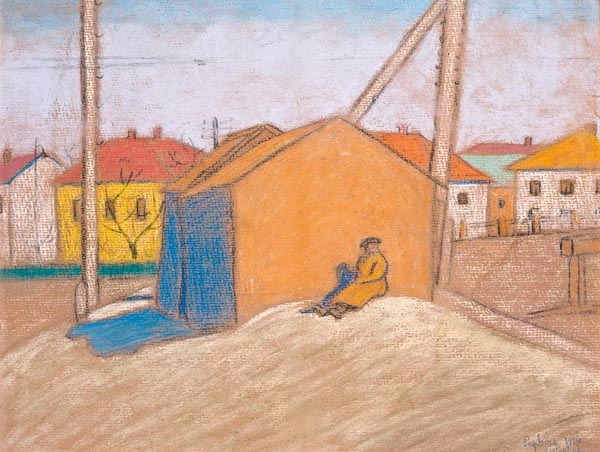Biography
Géza Pap (Grünberger until 1905), painter and graphic artist, was born in Ungvár on December 9, 1883, as the child of market craftsman Mór Grünberger and Fanni Berkovics. Between 1901 and 1903 he studied at the School of Industrial Design. In 1905, he applied for and took the name Pap Géza in Budapest.
In 1911, he already visited Nagybánya and in the same year, in Budapest, in Erzsébetváros, he married dental assistant Kornélia Braun. He had an exhibition in the National Salon, the Art Gallery, and the Art Gallery, where he had a collection exhibition. He was post-impressionist in his oil paintings, and more towards expressionism in his graphics. In the mid-1920s, his painted works are primitivizing works. His first wife died on October 22, 1914 and was laid to rest in the Israeli cemetery on Kozma Street.
He enlisted as a soldier at the outbreak of the First World War, was nominated as a soldier in 1915, and was a Russian prisoner of war in the fall of 1915. He was a soldier of the Budapest 1st Infantry Regiment. His capture was reported by the daily newspaper Est in February 1916. He returned home after six years as a prisoner of war, in February 1921, which was written about by the World. Károly was awarded the team cross.
In July 1923, the widow Géza Pap married Lívia (Lili) Kolben, whose father Emánuel Kolben was one of the leading violinists of the orchestra of the Hungarian Royal Opera House. His marriage was also covered by the newspaper Est. In March of the same year, he had an exhibition at the Belvedere. Between 1906 and 1940, he regularly exhibited at the National Salon, several times together with the artists of the KUT, and in 1929 he had a collection exhibition here.
He survived the Holocaust. One of his half-brothers, Lajos Gárdonyi (Grünberger), who was a well-known actor of his time, died in Bor in 1945 as a laborer. In October 1945, he appeared in the exhibition of the artists of the Social Democratic Party, in July 1946, in the First Art Exhibition, and in January 1947, in the Hungarian Art Weeks exhibition, with one picture each in the Ernst Museum. In 1952, together with his two brothers and others, he appeared as a defendant in a criminal trial for misappropriation of foreign currency, in which virtually everyone was acquitted, including him. At that time Budapest VIII. lived in the district.

